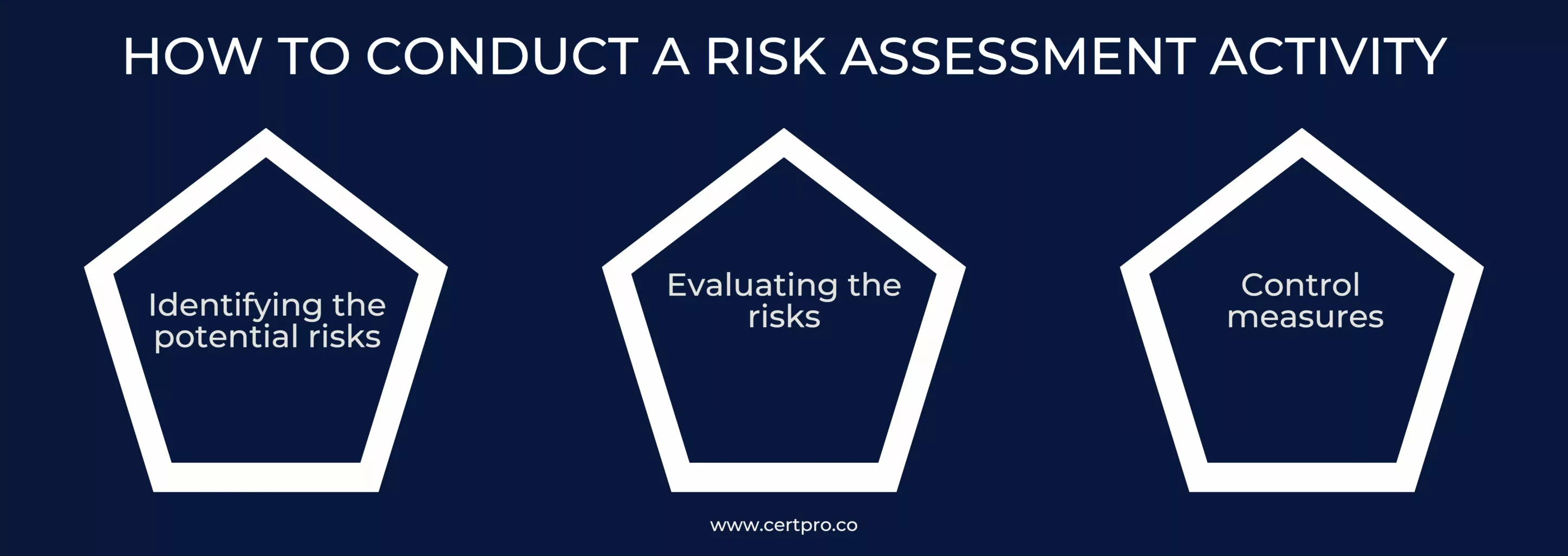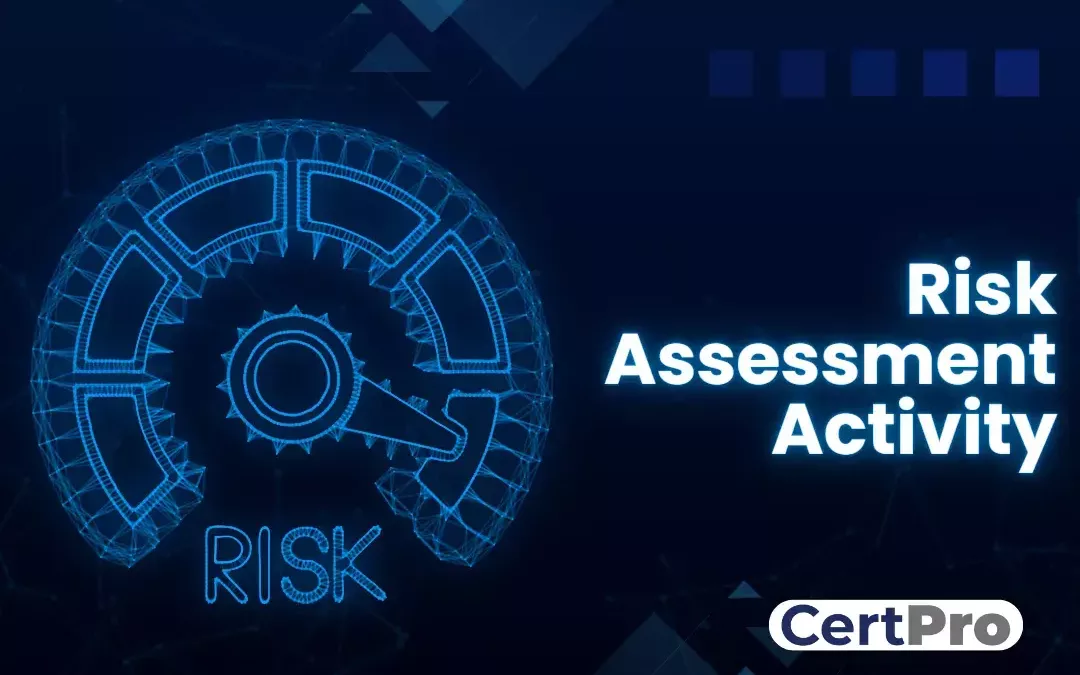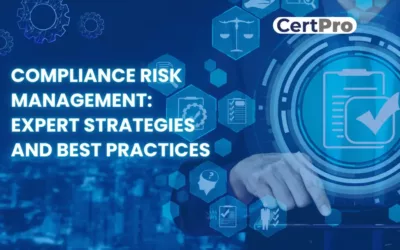Risks lurk around every corner, from sensitive data storage to financial matters. Organizations face a multitude of risks that can jeopardize their operations, tarnish their reputation, and impede their overall success. To mitigate these risks and ensure smooth sailing, organizations must adopt a proactive approach to risk management. And at the core of this crucial process lies the cornerstone known as risk assessment. It serves as a powerful tool for identifying and understanding potential risks that organizations may encounter. It involves a comprehensive evaluation of various factors, ranging from internal vulnerabilities to external threats. By meticulously assessing these risks, organizations gain invaluable insights into areas that require attention and mitigation strategies that need to be put in place.
By adopting these types of safeguards as an integral part of their risk management strategy, organizations can proactively address potential pitfalls, safeguard their operations, and protect their hard-earned reputation. This proactive stance not only minimizes the impact of unforeseen events but also positions them for long-term success and sustainable growth.
In this article, we delve into the depths of this game-changing tool, unraveling its profound impact on mitigating risks and illuminating the path to unprecedented success for organizations worldwide.
What IS A RISK ASSESSMENT?
The process begins with identifying the risks specific to your organization. These risks can take various forms, ranging from cybersecurity threats to market volatility, regulatory changes, or even natural disasters. With a discerning eye, you uncover the factors that have the potential to disrupt your path to success.
Once the hazards have been identified, a detailed examination is carried out. This entails diving deeply into the nature of each risk, studying its potential effects, and comprehending how it interacts with the specific conditions of your firm. You can estimate the likelihood and severity of each danger by getting a thorough grasp of it.
Evaluating the hazards associated with each hazard is the final stage in risk assessment. This entails analyzing the possible effect and possibility of occurrence while taking both quantitative and qualitative elements into account. The evaluation aids in risk prioritization and optimal resource allocation to address the most significant issues.
HOW TO CONDUCT A RISK ASSESSMENT ACTIVITY
Risk assessment is a systematic process where we identify the risks, analyze them, and, most importantly, mitigate them. This can be accomplished in a systematic manner. Now, Let’s check out the process of managing the risks.
Risk Assessment is the process that starts with identifying the risks, evaluating the risks, and mitigating the risks. Let’s get to know how this process goes on.

Identifying the potential risks:
- Internal risks: These exist within the organization, and they can get very dangerous for the company. So, it is important to identify them and be prepared for them.
- External risks: These risks are mainly not from the organization. When an organization has little or no knowledge of them, these types of risks might happen. For example, it could be a cyberattack or a natural disaster. Companies might have no idea of these types of risks, but it is better to have a backup plan to mitigate them.
- Project risks: Poor project management or low sales performance may be the root of or contribute to the majority of project risks. Managers who are assisting with the particular projects should mitigate them to avoid these risks.
Evaluating the risks:
- Likelihood of Occurrence: This happens when weights are based on the analysis of the probability that the threat might exploit the set of vulnerabilities.
- Consequences of risks: Risks have the potential to take down a company if we don’t see them as a problem. We should know how to mitigate them.
- Prioritize risks: Risks are identified as a threat and can cause lots of problems and any kind of loss. Those risks should be prioritized, and we should be prepared to face them.
Control measures:
- Set appropriate control measures: The first step must be setting up appropriate control measures for the identified and particular risk factor.
- Implementing control measures: Implementing the control measures for the risks that were identified Control measures can also be taken to remove the potential risks or reduce the hazard.
- Evaluate the implemented control measures: Check out the control measures that got implemented to mitigate the risks. It can be helpful to know the status of the risk and whether those control measures have the potential to reduce it.
USING A RISK MATRIX TO PRIORITIZE RISKS
Straightening out the level of risk isn’t as straightforward as finding a one-size-fits-all solution. Every situation calls for its own unique approach, tailored to the organization’s needs. Unveiling the best technique for each circumstance is the key. Deciphering hazards demands a deep understanding of workplace activities, the urgency of situations, and, above all, an unbiased eye.
For less difficult situations, a brainstorming session and some basic knowledge can prove helpful. However, when dealing with complex situations, an experienced team with relevant expertise becomes a necessity. Moreover, having a knowledgeable person guide them is crucial in such scenarios.
For example, let’s check out this simple form of risk matrix.
Firstly, the risk matrix is a helpful method for assessing risks based on the level of damage they may cause to organizations.
Severities here are mentioned below in a prioritized way:
- High: It is the severe damage that can be a loss of life.
- Medium: It can be a small accident or a sprain.
- Low: It isn’t harmful in any way and is also negligible.
The Probability section describes how often it might happen:
- High: It may occur more frequently compared to the other two, which can happen two or three times a year.
- Medium: It might occur once or twice in five years.
- Low: It may never occur or occur once in a lifetime.
A FEW TECHNIQUES FOR RISK ASSESSMENT ACTIVITY
Risk assessment is critical in many industries, including business, finance, cybersecurity, and safety. Here are a few risk assessment strategies that are regularly used:
Qualitative risk assessment: Risk assessment based on subjective judgments and qualitative measurements is referred to as qualitative risk assessment. It often uses scales like low, medium, and high to assess the likelihood and effect of hazards. This strategy is effective when data is limited or for preliminary risk assessments.
It offers lots of advantages:
- Having an easy presentation
- Simple assessment methods
- It is easy to prioritize risk management.
- There is no need to determine the frequency of risks.
However, it also has several limitations. Let’s check them out:
- No combined risk evaluation
- No Cost analysis
- Lack of differentiation
- depending on team members experience
A few examples of Qualitative Risk Assessment are the Delphi method, Decision tree analysis, Bow Tie analysis, and SWOT analysis.
Quantitative risk assessment: In contrast to qualitative risk assessment, quantitative risk assessment entails assigning numerical values to hazards based on available data and using mathematical models. This method employs techniques like probability distributions, statistics, and modeling to more precisely predict the likelihood and effect of hazards.
Advantages of Quantitative risk assessment:
It helps to identify a few of the risks that occur to organizations, like
- Hazards, which come at every phase of project creation,
- It helps to identify if there are Economic losses.
- Any damage to the basic functionality of the system
- Control strategies
- measures that needed to be adopted that helped reduce risk levels
Limitations of the Quantitative risk assessment:
- Availability of the data
- Applicability of data
- default risk
- Causality and independence
- Quality of data
A few techniques or examples for Quantitative Risk Assessment are Monte Carlo simulation, decision tree analysis, and Sensitivity analysis.
Identifying and successfully managing risks is a task that firms must perform in many different industries. Qualitative risk assessment has benefits including ease of use, affordability, adaptability, and early risk detection. It encourages stakeholder interaction, communication, and an emphasis on the seriousness and urgency of the risks. Qualitative risk assessment does, however, have drawbacks, such as subjectivity, imprecision, inherent biases, and challenges in comparing risks. It lacks the capacity to foresee outcomes and may find it difficult to analyze complicated interdependencies. For the use of qualitative risk assessment and its integration with other risk management techniques, it is crucial to comprehend these limits.
Organizations may accomplish a more thorough and robust risk assessment process, enabling informed decision-making and proactive risk management, by integrating qualitative and quantitative methodologies.
FAQ
What are the key differences between Qualitative and Quantitative risk assessment?
Qualitative risks are mostly based on subjective judgment and qualitative measures, while Quantitative risks assign numerical data that is based on mathematical models.
Critical questions asked during risk assessment?
- What are the company’s most important assets?
- What risks are noted?
- What are the solutions needed?
- What are the products we might need in the future?
What are the three main points that should be addressed in risk assessment?
The first one should be identifying the risk that caused the problem for the company; the next one should be determining how likely it is to cause a problem and how serious the problem is for the company; and the last one should be eliminating those risks. If it isn’t possible, we should control the risk.
When should we review the risk assessment?
Every three years. Companies and organizations should review their risk assessment every three years, or if there are any significant changes to be made to the company, a risk assessment should be conducted.
How to manage risk in activities?
Management of risk follows an easy 5-step method: identify, analyze, evaluate, treat, and monitor. To mitigate these risks, we can start by avoiding, accepting, reducing, or transferring them.

About the Author
NICOLENE KRUGER
Nicolene Kruger, Regional Manager in South Africa, is an experienced Legal Counsel with expertise in compliance and auditing. Her strategic, solution-driven approach aligns legal standards with business objectives, ensuring seamless adherence to regulations.
COMPLIANCE RISK MANAGEMENT: EXPERT STRATEGIES AND BEST PRACTICES
Compliance risk considers the organization's potential legal, material, and financial losses due to compliance failure. Thus, compliance risk is known as integrity risk. Organizations of all sizes are exposed to compliance risk. Hence, compliance failure results in...
TOP 7 DATA LOSS PREVENTION STRATEGIES IN 2024
In the contemporary business landscape, data is the cornerstone of organizational vitality. Businesses leverage data extensively to inform decisions, maintain competitiveness, and foster expansion. Nonetheless, they encounter multifaceted challenges emanating from...
TIPS FOR ARTICULATING YOUR SECURITY POSTURE TO STAKEHOLDERS
Cybersecurity is now a top-tier priority for any Organization. Data breaches can ruin the entire company, destroy customer trust, and damage reputation. However, companies can find decision-making difficulties because stakeholders, board members, department heads, and...




